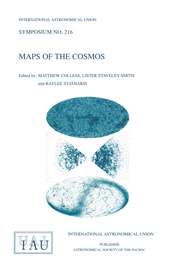Article contents
PLANET II: A Microlensing and Transit Search for Extrasolar Planets
Published online by Cambridge University Press: 19 September 2017
Abstract
Due to their extremely small luminosity compared to the stars they orbit, planets outside our own Solar System are extraordinarily difficult to detect directly in optical light. Careful photometric monitoring of distant stars, however, can reveal the presence of exoplanets via the microlensing or eclipsing effects they induce. The international PLANET collaboration is performing such monitoring using a cadre of semi-dedicated telescopes around the world. Their results constrain the number of gas giants orbiting 1–7 AU from the most typical stars in the Galaxy. Upgrades in the program are opening regions of “exoplanet discovery space” – toward smaller masses and larger orbital radii – that are inaccessible to the Doppler velocity technique.
- Type
- Extrasolar Planets
- Information
- Symposium - International Astronomical Union , Volume 213: Bioastronomy 2002: Life Among the stars , 2004 , pp. 35 - 40
- Copyright
- Copyright © Astronomical Society of the Pacific 2004
References
- 22
- Cited by


